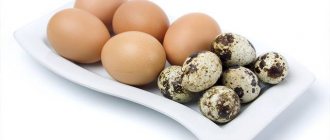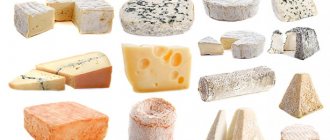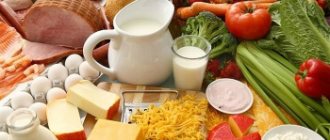What is cholesterol?
Cholesterol is the main link in lipid (fat) metabolism. It is synthesized to a greater extent by the liver, and to a lesser extent it is supplied with food. Cholesterol metabolism is regulated by a feedback type: an increase in its content in food leads to a decrease in synthesis.
Cholesterol is insoluble in water, so it is transported by low- and high-density lipoproteins.
The former carry cholesterol from the blood to the tissues of the body (“bad” cholesterol), and the latter transport it from peripheral tissues to the liver (“good” cholesterol).
The physiological purpose is that cholesterol is a rich source of energy, is part of cellular structures, and is the basis for the formation of vitamin D, bile acids and hormones.
Also, cholesterol is important for the full functioning of the nervous system, as it is part of the myelin sheath of the nerves and contributes to the correct transmission of nerve impulses.
Cholesterol is important for the proper functioning of the nervous system
Why is excess dangerous?
An increased concentration of cholesterol and its fractions in the blood leads to the development of vascular plaques, gradually blocking their lumen.
These changes lead to disruption of the functioning of the following human organs and systems:
- Cardiovascular system (coronary heart disease, hypertension). Risk of developing acute myocardial infarction, hypertensive crisis.
- Brain. Threat of acute cerebrovascular accident (ischemic and hemorrhagic stroke).
- Intestines. Ischemia (insufficient blood supply) of the intestinal walls can lead to necrosis.
- Kidneys. Progressive hypoxia of the organ threatens the development of morphological changes and chronic renal failure.
- Peripheral arteries. Atherosclerosis of the vessels of the lower extremities is dangerous due to the development of gangrene and the need for leg amputation.
What are the risks of a shortage?
Cholesterol is not an “enemy” of health, but a necessary element of metabolism. Insufficient intake of cholesterol per day leads to muscle weakness, gastric and intestinal disorders, motor and sensory disorders.
Cholesterol deficiency leads to the development of emotional instability and sleep disturbances, as well as decreased sexual function, mainly in women.
Cholesterol deficiency leads to the development of emotional instability
What tests need to be taken?
To determine the level of cholesterol in the blood, it is necessary to donate blood on an empty stomach for a biochemical blood test (lipidogram). Normal cholesterol levels: 3.0 -6.0 mmol/l.
Is it possible to live without cholesterol?
This substance is called a real “killer”, so products containing it are often completely excluded from the diet. This is not true. Cholesterol or cholesterol is involved in many metabolic processes. It is required for:
- production of estrogen, progesterone, testosterone;
- synthesis of adrenal hormones;
- formation of bile acids by the liver, which are responsible for the breakdown of fats;
- production of vitamin D, necessary for the metabolism of calcium and phosphorus;
- maintaining muscle tone and immunity.
The cell membranes of all living organisms are made of cholesterol. It is especially necessary for the cells of the central nervous system and brain. If an excess of lipids leads to atherosclerosis, then a deficiency causes constant fatigue, drowsiness, stress, impairs digestion, contributing to the development of other diseases.
A few years ago, it was believed that adolescents did not need to monitor lipoprotein concentrations. However, uncontrolled eating and abuse of processed foods, fast food, and carbonated drinks have become the main cause of metabolic disorders in the younger generation. As a result, today vasoconstriction due to the initial stage of atherosclerosis is increasingly being detected in patients aged 16-25 years.
Contents in products
In order to avoid lipid imbalance, you need to know how much cholesterol you can consume and what foods it comes from.
| Products | Quantity, g | Cholesterol content, mg |
| Pork | 200 | 160 |
| Mutton | 100 | 150 |
| Beef | 200 | 120 |
| Chicken meat | 200 | 180 |
| Rabbit meat | 150 | 200 |
| Turkey | 200 | 220 |
| Chicken liver | 200 | 1000 |
| Mackerel | 200 | 200 |
| Salmon | 200 | 120 |
| Boiled sausage | 300 | 180 |
| Smoked sausage | 300 | 300 |
| Cottage cheese 18% | 200 | 200 |
| Sour cream 20% | 100 | 80 |
| Milk 1% | 200 | 10 |
| Butter | 100 | 300 |
| Russian cheese | 200 | 120 |
| Kefir 1% | 200 | 30 |
Chicken eggs and cholesterol
Chicken eggs contain a lot of cholesterol, and a diet high in eggs can contribute to high blood cholesterol. However, this is very individual and depends on the specific organism.
When deciding whether to include eggs in your diet, look to see if the amount of cholesterol you consume per day meets the recommended amount. The recommendations for cholesterol intake are:
- If you are healthy, it is recommended to limit your cholesterol intake during the diet to 300 mg/day.
- If you have cardiovascular disease, diabetes or high blood cholesterol, your intake should not exceed 200 mg per day.
One large egg contains approximately 213 mg of cholesterol—all of which is contained in the yolk. Therefore, if you have already eaten one egg today, then you need to avoid foods containing cholesterol: instead of a serving of meat, eat a serving of vegetables, avoid high-fat dairy products throughout this day.
If you love eggs, but you don’t need extra cholesterol, eat only egg whites - they do not contain cholesterol. If a recipe calls for eggs, replace one egg with two egg whites.
ul
Recommendations for elevated levels
Elevated cholesterol levels are not a death sentence, but require dietary and lifestyle adjustments:
- It is necessary to reduce the consumption of animal fats and carbohydrates . Give preference to fresh vegetables and fruits. Reduce the intake of fried and fatty foods, give preference to stewing, boiling and steaming food. Completely eliminate the consumption of flour products and sweet carbonated drinks.
- Categorically give up bad habits . It has long been known that smoking and excessive consumption of alcoholic beverages kill our body, having a destructive effect on blood vessels.
- It is worth paying more attention to physical activity . We are not talking about long and grueling workouts in the gym. Walking or cycling to a park or forest will be an excellent alternative and a wonderful pastime.
- Lastly, drink enough water . An adult needs to drink 1.5-2 liters of water per day (not counting tea, coffee and other drinks). Proper water balance prevents the deposition of fat deposits in cells and regulates metabolism.
You need to reduce your intake of animal fats
Daily consumption rate
According to scientists, for the proper functioning of all organs, the norm of cholesterol per day is approximately 300 mg of cholesterol. However, you should not take this figure as a standard, as it can fluctuate greatly.
The daily intake for men and women depends not only on gender, but also on age, the presence of diseases, the level of daily physical activity and many other factors.
With normal indicators
For an absolutely healthy person, the daily cholesterol requirement can be increased to 500 mg. Although sometimes experts claim that you can completely do without cholesterol, which comes from foods, this is not true. It has a negative effect on the body not only if there is more cholesterol than necessary, but also if it is less than normal. In this case, the central nervous system and brain suffer first, which is accompanied by a constant feeling of weakness, fatigue, absent-mindedness, drowsiness, stress and other diseases.
For high cholesterol
For patients at risk for atherosclerosis, it is recommended to reduce the rate of cholesterol intake per day by half.
A diet to normalize cholesterol involves minimizing the consumption of animal fats. The lion's share of the diet should consist of fruits, vegetables and grains, and no more than 30% of the total food volume is allocated to fats of any origin. Of these, most should be unsaturated fats, which are mainly found in fish.
Diet to normalize levels
The word “diet” does not imply a strict reduction in food, or fasting, but only requires you to improve your diet and understand which foods should be reduced so as not to harm the body.
To prevent hypo- (low) or hypercholesterolemia (increased cholesterol levels in the blood), you need to make sure that your diet is varied and balanced in terms of getting all the necessary substances: fats, carbohydrates, proteins and minerals.
Recommended daily menu products:
| Products | Daily | Dosed |
| Meat | Chicken, rabbit, turkey. | Not fatty beef, pork. |
| Cereals and grains | Durum wheat pasta, brown rice, black bread, oatmeal and buckwheat porridge. | Wheat porridge. |
| Fats | Vegetable oils: flaxseed, sesame, soybean, corn, sunflower. | Butter. |
| Fish and seafood | Boiled or steamed: cod, hake, pollock, perch, bream, pike. | Fried fish with crust. |
| Vegetables | All vegetables, steamed, grilled, or boiled. | Fried potatoes, or french fries. |
| Fruits | All fruits, fresh or frozen | Canned with sugar, or sweet fruit juices/compotes. |
| Beverages | Green tea, fruit and vegetable juices. | Strong coffee, cocoa. |
| Dessert | Fruit jellies, salads. | Confectionery, ice cream. |
It should be noted that there are foods that reduce cholesterol levels and maintain normal levels in the blood.
These include: avocado, peanut butter, green tea, flax seeds and oat bran, as well as lentils, beans, apples.
Shrimp and cholesterol
To answer this question, let's move from theory to practice. In the 90s of the last century in the West there was active talk about the dangers of crustaceans due to their high cholesterol content. And in 1996, scientists from Rockefeller University published a very interesting study on this subject.
Every day for three weeks, 18 people ate 10 ounces of shrimp (just under 300 grams). Do you know what the result was? Everyone's cholesterol has increased!
It turns out that shrimp are really dangerous for blood vessels and the heart? Not so simple. Scientists measured not only total cholesterol levels, but also the amount of LDL and HDL (you read the article recommended above, right :)?). It turned out that the level of “bad” cholesterol increased by 7%, and the level of “good” cholesterol by 12%. That is, the LDL/HDL ratio, called the atherogenic index, has become smaller. This means that the risk of atherosclerosis has decreased slightly. In addition, triglycerides were reduced by 13%.
Of course, 18 people is a very small group of people and it is impossible to draw an unambiguous conclusion based on this study. However, in the USA, shrimp have now been completely rehabilitated.
Another indirect proof of the innocence of shrimp is the fact that the Japanese, who consume a considerable amount of shrimp, are on the list of countries with minimal mortality from cardiovascular diseases.
A few words about preparation
Keep in mind that the benefits of a product largely depend on how it is prepared. Shrimp can be cooked in a variety of ways, and some methods significantly reduce their benefits.
Probably many people are familiar with the method of preparing shrimp in batter. In this case, they are dipped in a mixture of eggs and flour, and then fried in a large amount of oil. It turns out to be a very tasty snack for beer, but the benefits of such a dish are questionable.
Rate this article:
What are the benefits of dried apricots? Beneficial properties of dried apricot
The benefits and harms of bananas
Healthy and healthy snacks
ul
Healthy foods
People who want to maintain normal blood cholesterol levels must pay serious attention to their diet. You should not completely avoid foods containing animal fats. In this case, as practice shows, in order to experience a feeling of satiety, a person begins to lean on carbohydrates. As a result, they are converted into fats in the body, which means cholesterol increases. That is, this way cannot solve the problem.
So what can you eat:
- Fish is healthy, it is advisable to eat it every day. Omega-3 acids help maintain normal blood pressure and cholesterol levels. Preference can be given to sea fish;
- chicken and turkey meat cooked without skin. Rabbit meat. If you use “heavier” meat - beef or lamb, you should only use pieces that have been deprived of fat;
- products of plant origin. Very good - carrots, beets, cabbage. Pumpkin and dishes prepared from it are especially beneficial for the liver;
- porridge from natural grains. If the cereal is processed so as to become an instant product, it is undesirable to use it;
- vegetable oils. Only here you need to observe moderation, since any oil is very high in calories;
- various fruits, including dried fruits.
The following should not be completely excluded from the diet:
- eggs should be used 2-3 times a week. It is advisable to eat them not as scrambled eggs, but boil them. Or include it in dishes;
- dairy products such as butter, cottage cheese, cheeses. Every day you can afford a sandwich, put a piece of butter in your porridge. It is recommended to use low-fat cottage cheese. The fat content of cheese should not exceed 30%.
What is the difference between LDL and HDL?
Low-density lipoproteins (LDL) are harmful cholesterol, which in excess amounts deposits on the walls of blood vessels. In normal doses, this substance only promotes cell function. High-density lipoprotein (HDL) is good cholesterol, which, on the contrary, fights LDL. It transports it to the liver, where over time the body removes it naturally.
The daily intake of cholesterol is calculated taking into account the ratio of these two substances.
Doctors recommend testing for total cholesterol, but this indicator is less informative. It is better to donate blood for a detailed analysis so that the doctor can see the difference between LDL and HDL.
How much cholesterol is the norm per day, and how to calculate everything?
The norm for cholesterol per day is considered to be no more than 300 mg. This indicator should be taken into account at the stage of drawing up the menu for the day. This rule should be taken as a basis for those people who already have high cholesterol levels. The required level of this substance is calculated taking into account the serving size. For example, 250 mg of cholesterol is found in:
- 1 egg;
- 400 ml fat milk;
- 200 g pork tenderloin;
- 150 g smoked sausage;
- 50 g chicken liver.
It is enough to consume at least one of these products a day, and your LDL level will already be high.
LDL content in different foods
To eat healthy and balanced, it is worth knowing which foods increase and decrease this indicator. It is imperative to use tables with the already calculated amount of cholesterol per 100 g of product.
List of foods that increase LDL:
- pork;
- fatty beef;
- chicken liver;
- poultry meat;
- mayonnaise;
- baking;
- White bread;
- pasta;
- fast food;
- sausages;
- confectionery;
- full fat milk;
- butter;
- spreads;
- cream with more than 20% fat content;
- hard cheeses (more than 30% fat)4
- red caviar4
- eggs.
Consumption of these products in large quantities is fraught with a sharp deterioration in health.
Healthy LDL-Lowering Foods
To lower cholesterol, you need to consume more:
- vegetables;
- fruit;
- berries;
- greenery;
- fresh carrots;
- legumes;
- cereal crops;
- low-calorie fermented milk products;
- sea fish;
- chicken, turkey, rabbit, veal meat;
- garlic;
- onions;
- tomatoes;
- seafood;
- flax seeds, sesame seeds, sunflower seeds, pumpkin seeds;
- nuts;
- dried fruits
It is recommended to drink at least 2 liters of plain still water. The menu for the day is compiled taking into account the calorie content of the dishes. For women, the calorie content should not exceed 1700-2000 kcal, and for men - 2500 kcal.
It is necessary to calculate how much low-density lipoprotein can enter the body with food at the stage of choosing products. Cholesterol turns into a harmful substance only in one case - when it enters the body in excess.
Foods with the highest cholesterol content
At the first signs of lipid metabolism disorders in the body, patients are prescribed preventive therapy, and the main role in it is played by proper nutrition, which excludes foods high in lipids. For people who find themselves in this situation for the first time, it can be difficult at first to figure out what foods they can eat and which they need to avoid. For this purpose, there are special tables for cholesterol content per 100 grams of product.
Meat by-products are considered real cholesterol bombs , and brains are the record holder for lipoprotein content, as they contain about 800-2200 mg of cholesterol. This means that by eating 100 grams of brain, we will exceed the permissible daily intake by 3-7 times.
The caviar of the sturgeon family is in no way inferior, the amount of cholesterol in which can range from 2000 to 2500 mg per 100 caviar. A little less, but still a lot of cholesterol in kidneys, cod liver and egg yolk (about 1000 mg per 100 grams), 800 mg in duck and goose eggs, 500 mg in kidneys.
There is a lot of cholesterol in river fish and seafood. 400 mg in horse mackerel, 300 mg in stellate sturgeon, 280 mg in mackerel and carp, and 220 mg in herring and flounder. Meat has relatively less cholesterol. Dietary meat is considered to be chicken, duck and rabbit; they contain 80, 50 and 40 mg of cholesterol, respectively.
Among all dairy products, hard cheeses contain the most cholesterol. Russian, Kostroma, and Dutch cheeses contain from 500 to 2500 mg of cholesterol.
Also considered harmful are foods with large amounts of saturated fatty acids, most of all lipoproteins in butter, palm and coconut oils, sausages, chocolate and freshwater fish.
Despite all these numbers, you need to understand that sterol is harmful to the body only in excess quantities. It is impossible to completely abandon products of animal origin, since by doing so we deprive ourselves of the mass of useful elements that they contain in addition to bad and good lipoproteins. With proper preparation and a reasonable dosage, you can eat almost anything without exceeding the fat intake limit.
If you carefully monitor your daily cholesterol intake, you can easily maintain normal lipid levels, maintain heart and vascular health, and significantly reduce the risk of developing atherosclerosis.
How much cholesterol is in lard
Lard is one of the favorite products in Slavic and European cuisine. It is loved, prepared and consumed by Ukrainians, Belarusians, Russians, Germans, Poles, Balkan Slavs and many other peoples whose culture and religion allow them to eat pork. Everyone has their own recipes and their own names for this product. So, among the Germans it is speck, among the Balkan residents it is slanina, among the Poles it is elephant, and the Americans call it fatback lard. To clarify how lard and cholesterol relate, you need to understand what lard is, what it consists of, and what properties it has. After all, there is an opinion: lard is pure cholesterol and is very harmful to health. But the history of the existence of lard as a food product began not yesterday, but a very, very long time ago. Did our ancestors find something in this?
A little history of the product
It is believed that lard originated as food for the poor. The best cuts of pork went to the rich and powerful, while the poor had to be content with the leftovers. And often there was very little left - the skin and a piece of fat adjacent to it.
Lard was known back in Ancient Rome, then it was called lardo. Lard was popular in Spain. Spanish sailors, plowing the seas and conquering the world, always had a supply of hams and lard with them. These products could be stored for up to six months, and they had a lot of calories. If it weren’t for the lard in the holds of Columbus’s ship, his discovery of America would have remained in doubt. The question “does lard increase cholesterol” was of no interest to anyone, since they knew nothing about cholesterol at that time. And taking care of health in those days was not a priority for ordinary people.
In the Middle Ages in Europe they consumed a lot of lard. Such a nutritious product was constantly in demand by both townspeople and peasants. Monks were also allowed to eat lard. The lard was well stored and gave energy. It was eaten plain and added to various dishes.
In Spain they ate and continue to eat jamon; in England they ate and continue to eat scrambled eggs and bacon for breakfast. The Slavs cooked borscht, seasoned vegetable dishes with lard, etc. And no one wondered whether it was possible to eat lard with high cholesterol.
This is how lard has survived to this day. And only with the popularization of a healthy lifestyle, with the growth of knowledge about the human body, doubts began to arise about the usefulness of this product.
Composition of the product
Lard is mainly animal fat, and subcutaneous fat, which retains biologically active substances and cells. The calorie content of lard is very high - 100 g of the product contains 770 kilocalories. Of course, there is cholesterol in lard, as in any product of animal origin. But there is no need to rush and immediately include lard in foods that are harmful to health. First, let's determine how much cholesterol is in lard. So, it is known that 100 g of lard contains from 70 to 100 mg of cholesterol. Is it a lot or a little? For comparison, 100 g of beef kidney contains significantly more cholesterol - as much as 1126 mg, 100 g of beef liver - 670 mg, and butter - 200 mg. Surprisingly, lard contains less cholesterol than foods such as eggs, hard cheese, heart, veal and even some types of fish.
Foods that help lower cholesterol
The daily intake of cholesterol will be met if you eat foods that contain little low-density lipoprotein and very low-density lipoprotein. But it is recommended to exclude the following foods from the diet:
- Meat containing a large amount of subcutaneous fat. These include fatty pork, turkey or goose.
- Egg yolks. They contain much more cholesterol molecules than proteins.
- Some dairy products. These include butter, cream, fatty cottage cheese, milk and sour cream.
- Rich broths. If you eat a bowl of such stew every day, the atherosclerotic process can affect the vascular walls within a few months.
It is important to adhere to a certain diet every day, observing the permissible norm of lipoproteins in food. But experts call no less important the consumption of special foods that bind “extra” cholesterol and remove it from the body, ensuring its normal level in the blood.
Here is a list of foods that you should eat weekly:
- foods enriched with mono- and polyunsaturated fats: avocado, olive and peanut oils;
- almond;
- all foods rich in lycopene: grapefruit, guava, tomatoes, watermelon;
- oat bran;
- barley groats;
- green tea;
- garlic;
- flax seed;
- pistachios, walnuts;
- dark chocolate.
In order to lower blood cholesterol levels, you need to eat small amounts of these foods. Their consumption rate is only 20-100 grams every day. Thus, without the use of drug therapy, it is possible to reduce the level of lipoproteins in the blood to 18% and minimize the risks of developing dangerous diseases.
For people who have already been diagnosed with severe vascular diseases (for example, coronary atherosclerosis), experts recommend following a vegetarian diet with a cholesterol content of no more than 100 mg per day, which is significantly less than the generally recommended intake. This diet will allow you to stabilize a person’s condition in 2 years and live a full life.
Found an error in the text?
Select it and press Ctrl Enter and we'll fix it!
You can change the picture of cholesterol in the body by first reviewing your menu. A person who does not think about the consequences eats foods every day that can raise cholesterol levels to the limit in the shortest possible time.
If you want to minimize the possibility of vascular diseases, you need to know which foods carry the risk of cholesterol. They are mainly of animal origin and have a high fat content. The list of foods most saturated with cholesterol looks like this:
- Margarine. During its production, unsaturated fats are hydrogenated to form huge amounts of trans fats. Margarine contains prohibitive amounts of cholesterol. This is the first product you should avoid.
- Chicken egg yolk. The amount of LDL it contains is quite large. But at the same time, one should not discount the fact that it also contains enough useful substances. You shouldn’t completely eliminate yolks, but limit your consumption.
- Sausage products. They are mostly made from pork with various additives, most often chemical. This type of meat has a high cholesterol content.
- Liver pate. Regardless of the origin of the pate - pork, beef, chicken or fish, since the liver is designed to process cholesterol, its content will be too high.
- Canned fish with added oil. To avoid suffering from any type of vascular diseases later, replace them with canned fish in its own juice.
- Caviar. Despite the fact that this product contains a lot of protein and beneficial microelements, it is high in calories, which means there is plenty of animal fat in it.
- Fast food. The components from which instant meals are prepared in catering establishments have a high fat content and are additionally fried in animal oils.
- Processed meat. It has a high fat content and is supplemented with various preservatives. As a result, there is a lot of cholesterol in bacon or stew.
- Hard cheeses. Usually, when choosing cheese, we give preference to the one with higher fat content. But this also means more cholesterol. But low-fat cheese is an excellent source of calcium.
- Shrimps. They are tasty and have a supply of microelements. But they also have more than enough fat. If you suffer from elevated LDL, it is best to avoid them.
Of course, you can bring your cholesterol levels back to normal using medication. But by streamlining your diet, giving up some foods altogether, and reducing the consumption of others, you can improve your health once again without resorting to medications.











